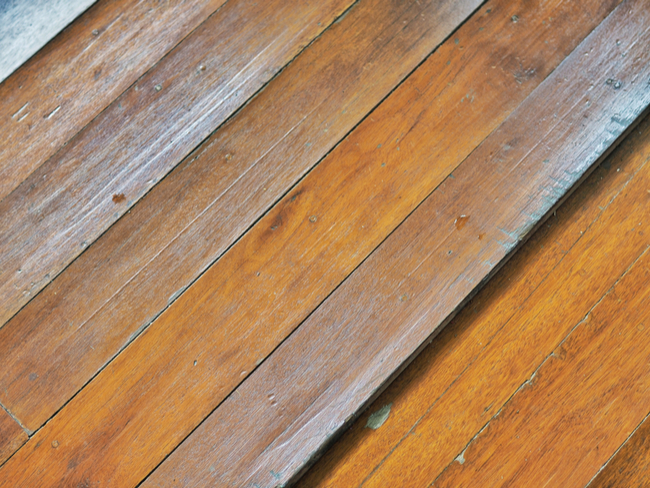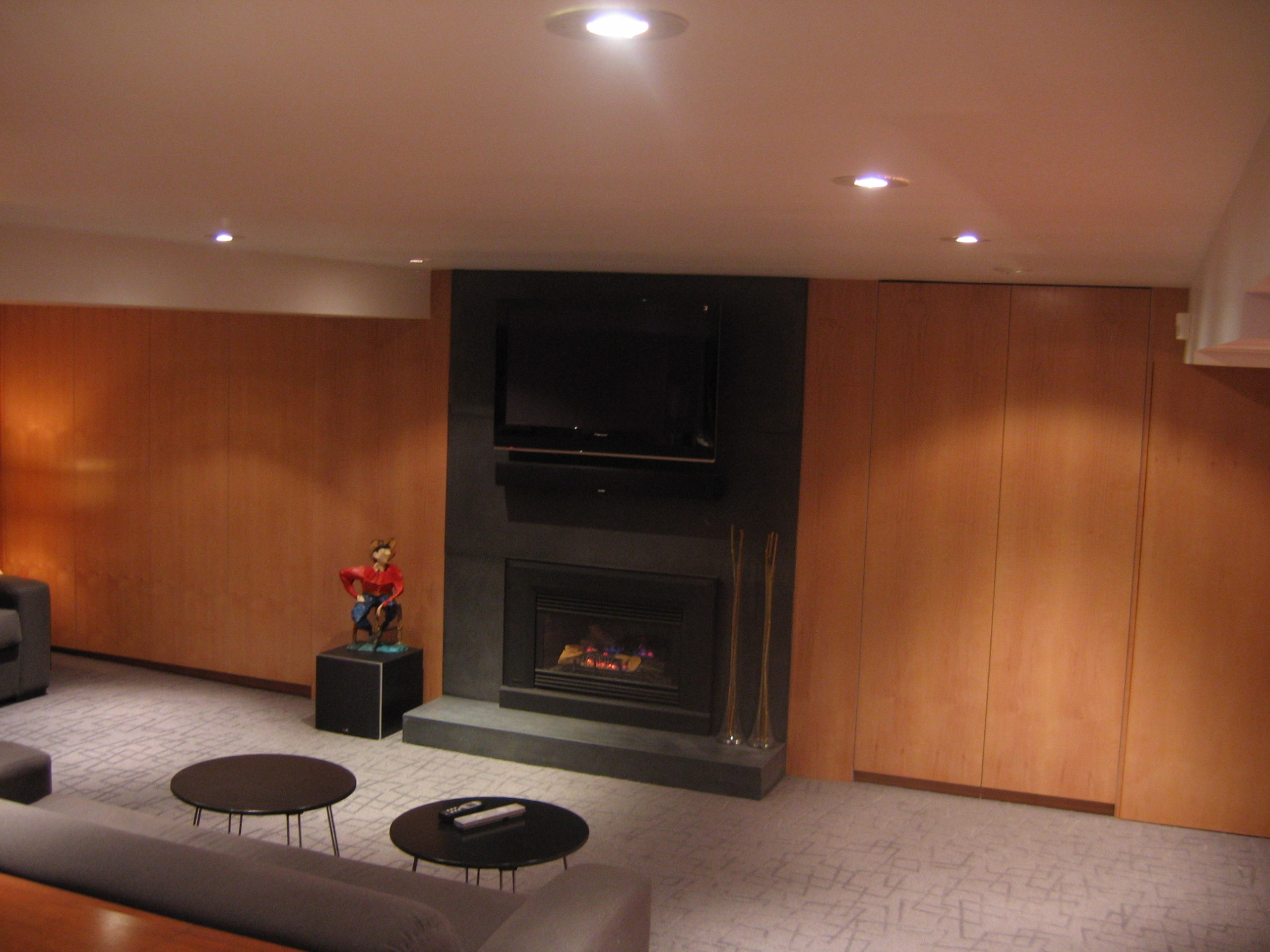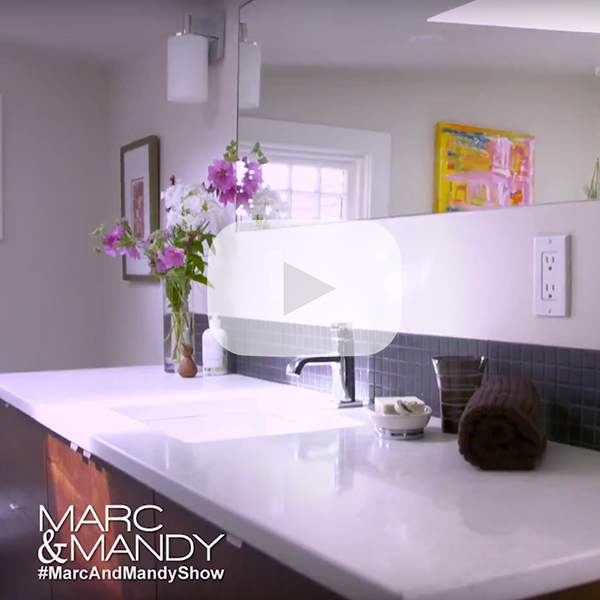Flooring is a pretty major component of our homes, and one that is not easily changed out. Finding the right material for your space can be daunting, so on our podcast, All Things Renovation, Brandy interviewed Grant Bergman from Beatty Floors. He went through some of the common options, and where certain types of flooring are most suited in your home. Here’s a summary of what we learned from him.

Common Flooring Options
Engineered Hardwood
Engineered hardwood is typically made up of a softwood laminated base with multiple layers of plywood that run in opposite directions to provide stability. This product comes pre-finished, which helps speed up the construction schedule by approximately one week.
When you get into the higher quality products, they give you the performance of a solid wood floor. They have a thicker lamella, which is the top layer that can be refinished. The entry level priced products only have a 1.5mm top layer, which is often a rotary-peeled veneer and doesn’t allow for refinishing.
Traditional solid wood planks tend to be 3.25″ to 4″ wide, whereas engineered hardwood planks are available in 7″ to 9″ planks. These have a nicer aesthetic while still maintaining their performance. At the larger width, solid wood planks could have cupping or peaking.

An example of cupping in a solid hardwood floor.
Engineered hardwood can be used on all floors of your home. If you’re using it in a basement, make sure that it’s water-tight. Install a vapour barrier and do a moisture test to make sure there are no challenges with hydrostatic pressure (water coming up through the ground). Water and wood don’t mix well!! Don’t use this product in a bathroom or a kitchen, as you’re in for some trouble if your toilet or your dishwater were to leak.
Luxury Vinyl Tile (LVT)
This is a modular vinyl product that can resemble engineered hardwood to the untrained eye. They are typically glued down, rather than clicked in place, which allows for easy plank replacement if there is damage in the future. LVT doesn’t have the same issues with water that wood does. If a spill is left for a couple of hours, it won’t seep into the floor and cause damage. You still need to do moisture tests if you install it in a basement, as the adhesive will struggle to work if you have excessive hydrostatic pressure.
It’s a fairly durable product, and the higher end options have lots of colour and grain options. Registered embossing allows for the print grain and the texture to closely mimic real wood. Property managers favour it as it doesn’t suffer from pile crush that shows the traffic patterns in the same way that carpet does. It’s great for families with lots of kids and dogs running around too.
Carpet
We recommend carpet with a bit more texture and pattern, especially if you have a hard-wearing family. You get what you pay for here. Entry level carpets made of nylon or polypropylene will crush down and stop looking good much sooner. Choose a mid- to high-level carpet that will perform, as replacement is a huge inconvenience.
Stairs should be carpeted for traction, and it’s also nice underfoot. They get a lot of abuse as people rush up and down them, with quick pivots and turns. Choose a tight Berber or wool carpet that will hold up a lot better than a nylon. The trade off is that nylon carpets don’t stain as easily as wool.
Underlay
The underlay also plays a part in the performance of your carpet. Cheap chip foam underlay used to be popular but if something is spilled on the carpet and you do hot water extraction, it can continue to bring up whatever was absorbed by the underlay. In the mid level and higher end residential projects we use urethane underlay, which is impervious to spills. If you spend a little more on your underlay, you can save a little more on your carpet.
Eco-Friendly Flooring
Cork
This product is not as green as you think it is, as it comes from overseas, often from Portugal or China. However, it is soft and warm underfoot and has a nice rebound if something is dropped on it. It can be refinished, giving it a similar lifetime as a hardwood floor. And like wood, it is not good in combination with water. Maintenance is similar to other flooring types. Make sure to keep it swept and vacuumed so that debris is not penetrating the top layer. Every 5-10 years you can do a topical refinish.
Marmoleum
Marmoleum, which is also manufactured in Europe, is made of linseed oil and has a jute backing. It has a top shield and is really good under heavy foot traffic, so is a popular choice for schools. It’s not as durable with leaking water, and as it’s a sheet product, there are visible seams so is not as conducive for kitchens. It also lacks grain and texture, so putting it in a location where items are often dropped, causing visible dents.
Flooring for specialized rooms
Media Room
Walls are typically dark to mimic a cinema, so we would recommend something dark and with a busy pattern to hide any spills from all the treats that will be enjoyed in the room.
Carpet tiles are also an option, as they are modular and can be easily replaced if one is damaged. They are 19″x19″ or 24″x 24″ square, and are glued in place with pressure-sensitive glue. You can create some fun patterns with squares or plank shaped tiles, and some varieties have a foam backing which is helpful with acoustics and warmth underfoot.

Carpet with a fun pattern in a custom media room
Home Gym
Luxury Vinyl Tile (LVT) is a good option for a gym, as it’s low maintenance, good with sweat and water bottle spills, but doesn’t look like a commercial gym.
Wine Cellar
Cork is a natural fit with wine! Plus a wine bottle dropped on a cork floor is less likely to shatter than on wood or tile.
Mud Room
Tile performs the best in a mud room, as your feet are often wet and dirty when you come in from outside. Even if you have another type of flooring throughout the room, you can still create a small tiled area just inside a door. Just make sure the transition between the two types of flooring is such that they are flush with each other.
Do your homework beforehand so that you know the thicknesses of all of your products and what you need underneath them to provide the proper support. This is also true around stairs, where uneven risers can create serious tripping hazards.
To listen to the full episode or read the show notes, visit www.AllThingsRenovation.com. You can also click on the Podcast tab at the top of our website at www.woodbeart.com. We also covered flooring in Episode 7 of our Kitchen series. This can also be found on our website or downloaded wherever you get your podcasts.


